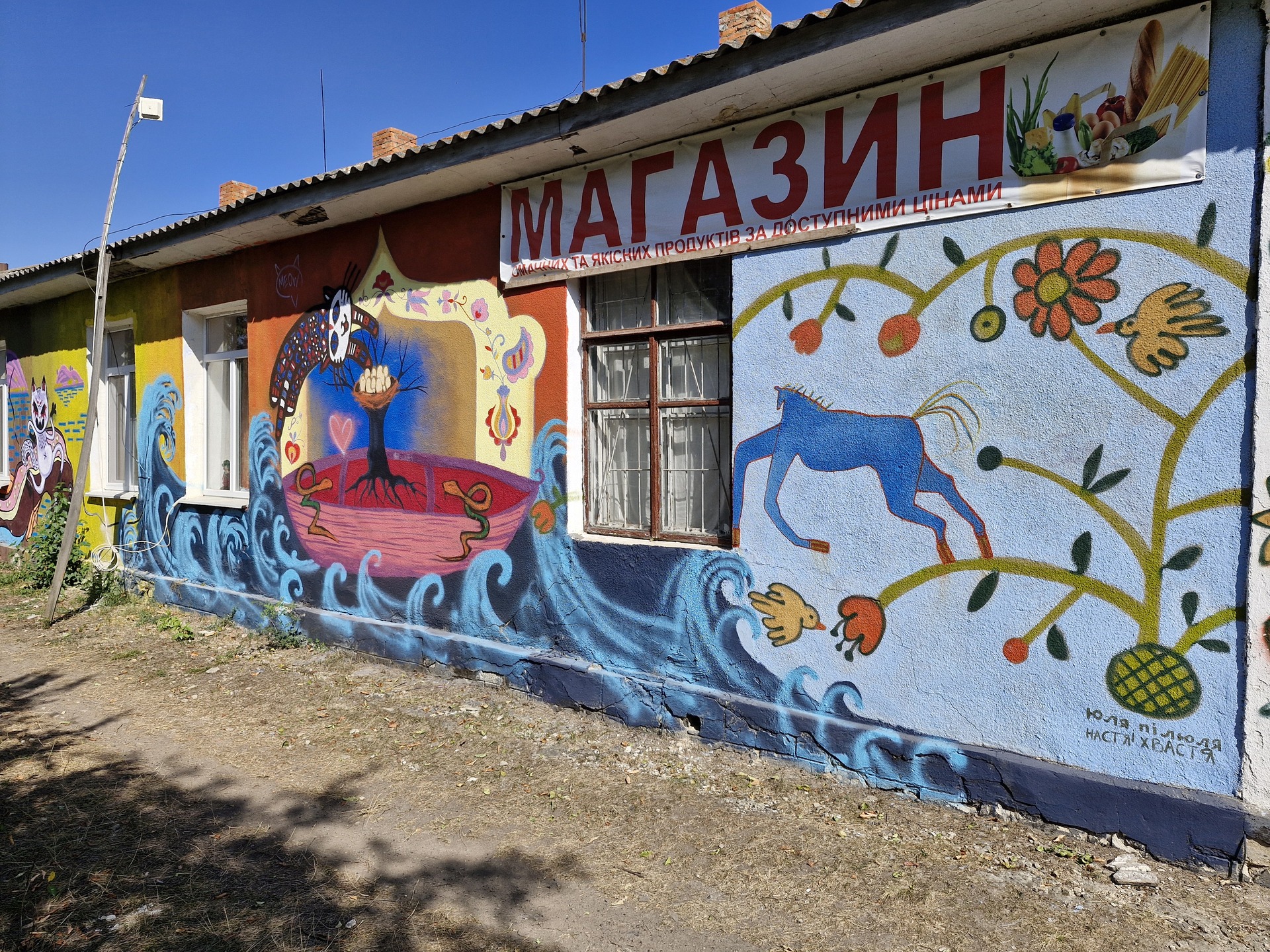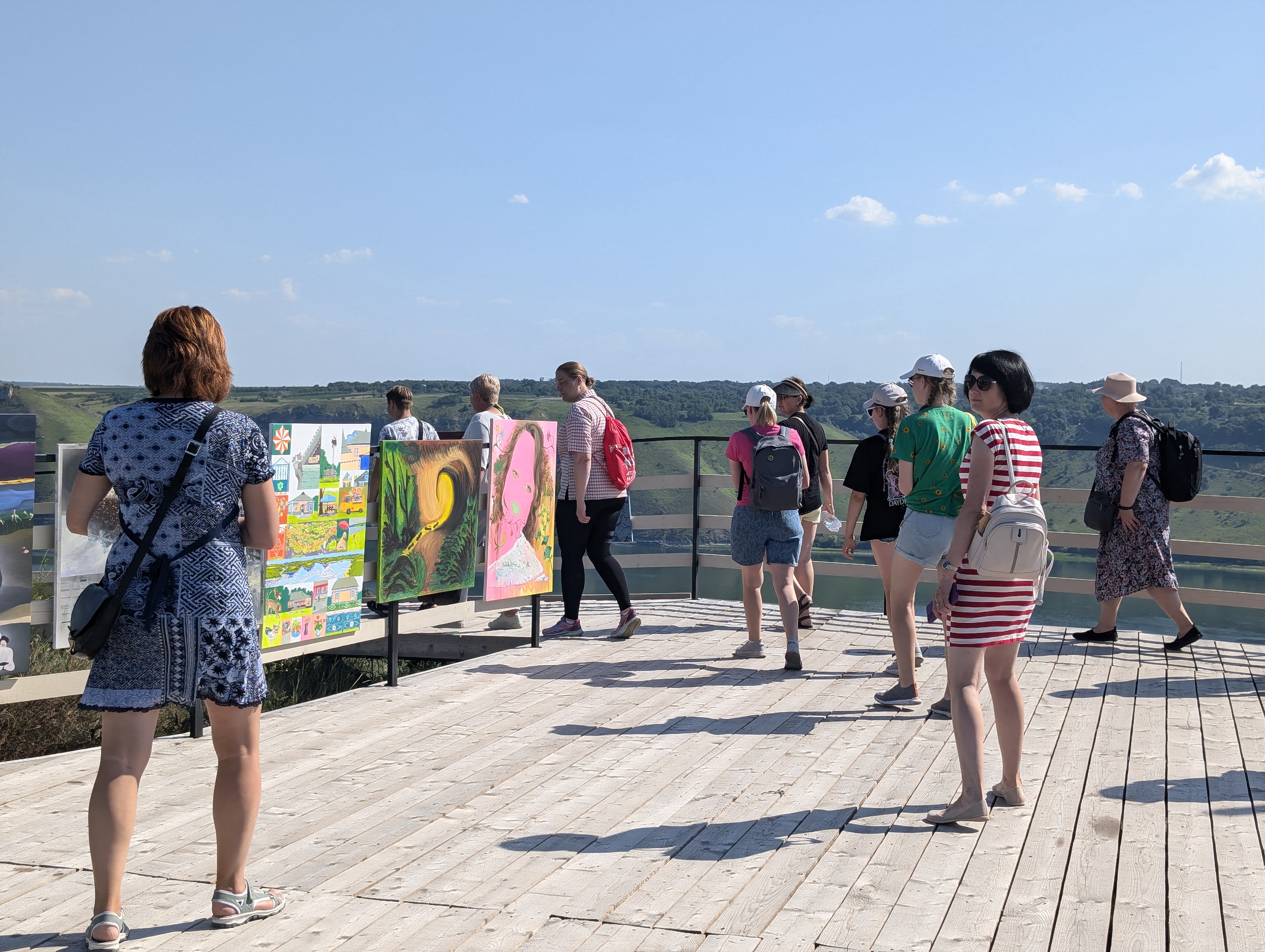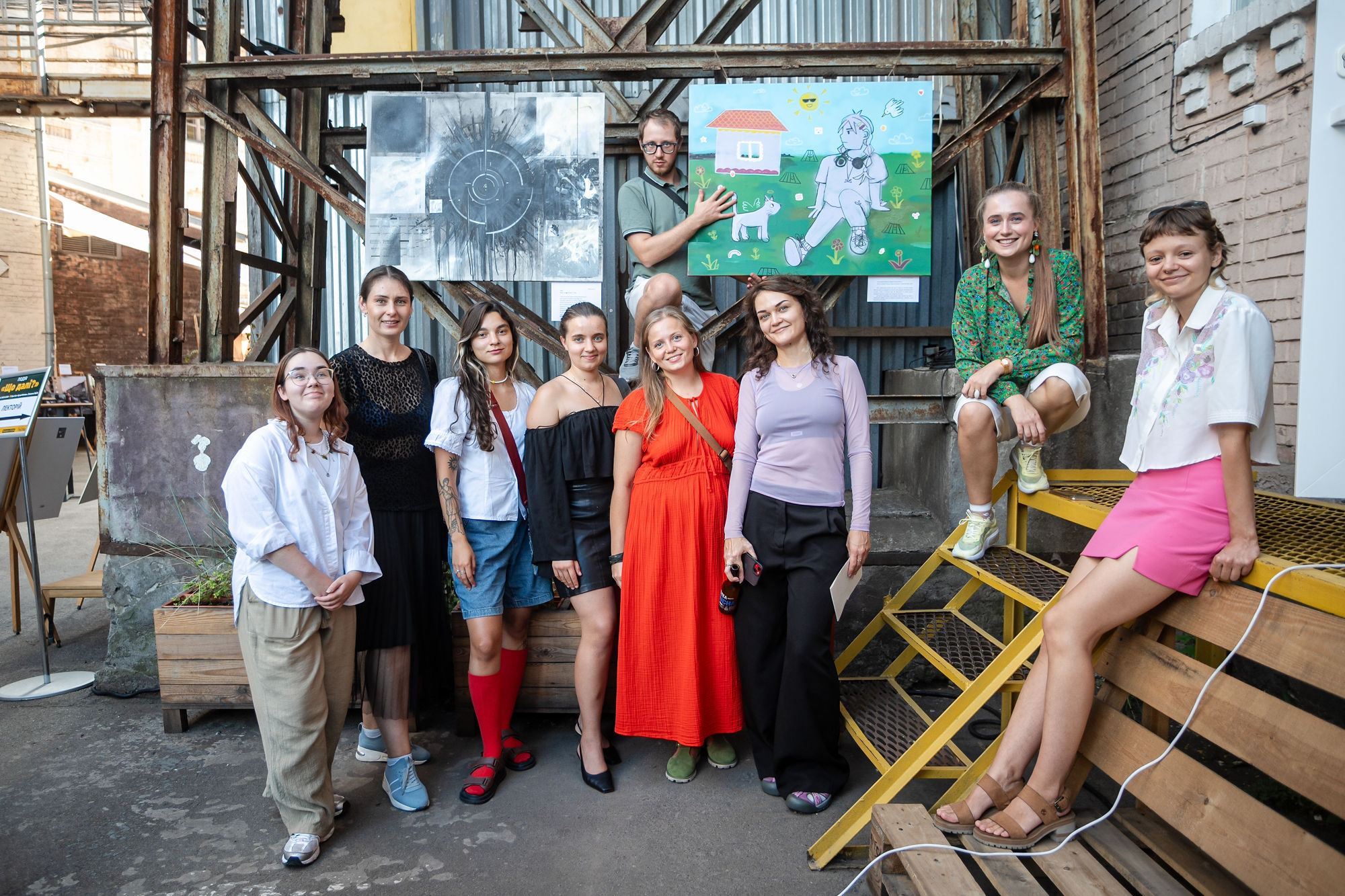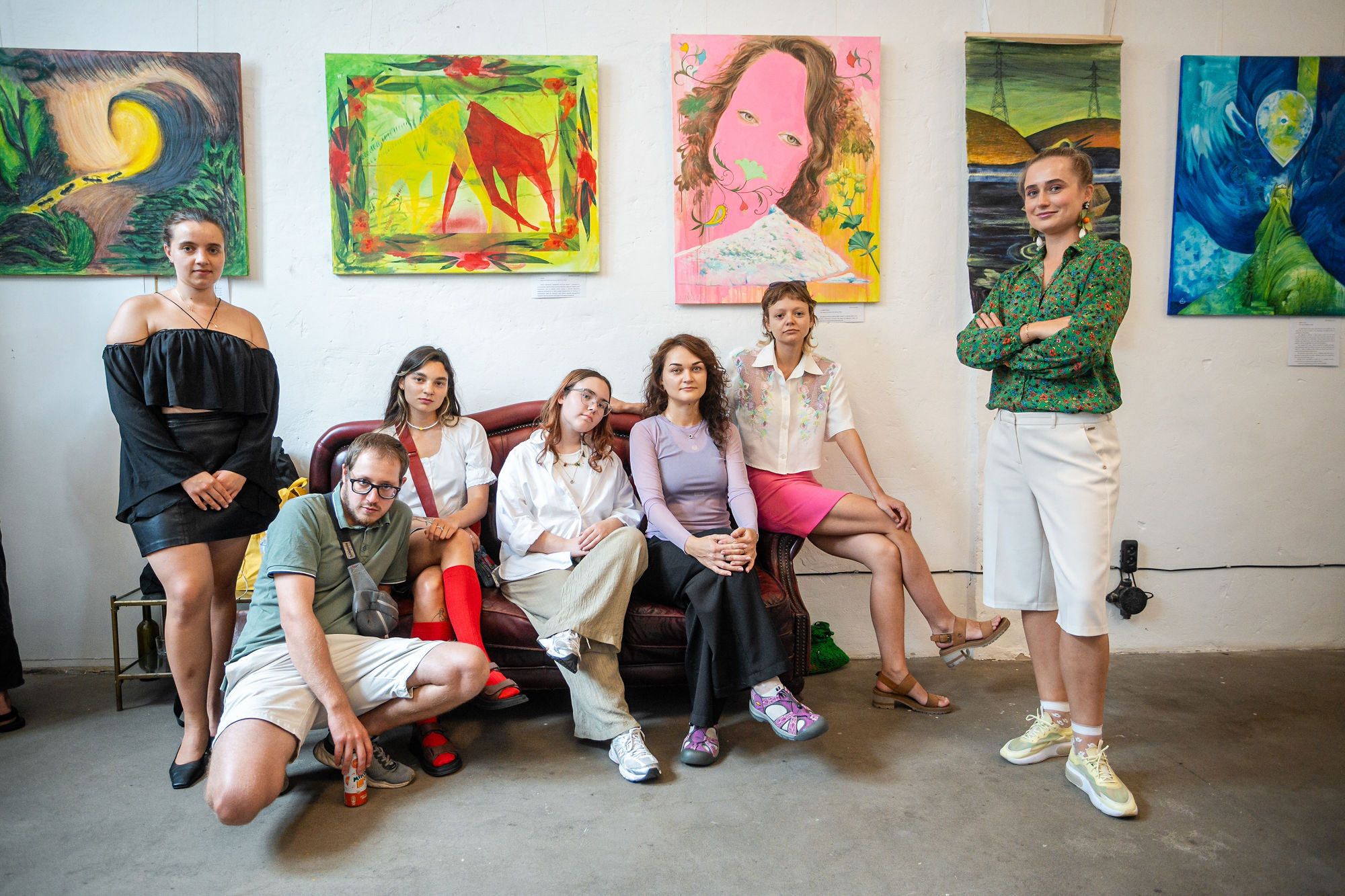ZMINA: Rebuilding - Life After. An artistic residency that gives hope

Bakota is a flooded village in the Khmelnytskyi region of Ukraine. Residents of this area were relocated to neighbouring villages, and the place was flooded in 1981 during the construction of the Dnipro hydroelectric power plant. The flooded areas had unique historical monuments and monasteries. There is even a legend that the Buddha's fingerprint was left on the flooded site. Nowadays, hundreds of pilgrims, believers, and tourists come to this place to admire the power of the place and the views.
The village of Horaivka is located near the flooded Bakota. The NGO Territory has organised an artistic residency there that works with both the present and the past, exploring and healing traumatic experiences.

How it all started
The NGO Territory works in the Khmelnytskyi region, creating projects for local communities. Before the full-scale invasion began, they organised a successful music and art festival of contemporary street art, Respublika, in the old fortress of Kamianets-Podilskyi. In 2021, the NGO launched Bakota Hub residencies. Alina Oliynyk from the organization says:
"We rented the premises of an out-of-service school and turned it from an abandoned building into an artistic residence. We wanted to create a place where artists would come to be inspired, work together, and create."
The residency center consists of two buildings: residential and creative. There are workshops, a kitchen, and a dining room. The artists live in one of the spaces, and hold events and work in the other.
Since then, various projects have been launched for the residences. But after the invasion began, the residency center began to be used as a shelter for internally displaced persons. The NGO team postponed the art projects and started working on integration and assistance. Displaced people lived in the residence for two years. The team found humanitarian aid, helped people find their place there, because many of them came from the cities and needed help to adapt to life in the countryside and to make friends with the local population. Alina Oliynyk says that people managed to adapt, bought houses in the villages and began to join the activities of the villagers. It was then that the NGO realised that they could resume creative residencies.
Dialogue that unites contexts and explores trauma
A new project by the NGO Territory called 'Life After: Dialogue', helped the team to look at the contexts they were already familiar with from a new perspective. Alina Oliynyk describes how the idea first came to them: all the residents of their village were also internally displaced, having been forced to leave their homes due to the construction of a hydroelectric power plant and the flooding of their homes.
Then the team decided that they could combine two experiences: the 1981 resettlement under Soviet rule and the 2014 and 2022 resettlements due to Russian aggression.

The team put out an open call and selected participants for a ten-day residency. "They were mostly girls, also internally displaced persons, and they lived in this village, explored it, talked to local people, and all this became the basis for creating their cultural and artistic works," says Alina.
During the residency, as well as working on their own individual artworks, the authors were also involved in the joint work of creating a mural. Under the guidance of the curator, the participants gathered, cut out parts of the mural, chose colours together, and thought about the composition. During the residency, the participants communicated with local residents and were inspired by nature, mosaics on houses, and animals. All this helped them to concentrate on their own creativity and, at the same time, to take a break from disturbing obsessive thoughts.
The title 'Life After: Dialogue' already hints at the main theme of the residency project: reconstruction. What awaits Ukraine after the victory, what challenges will it face? The participants were free to interpret the topic.
.jpg)
The works of the participants were diverse. Most of them worked with painting, revealing the themes of rebirth and new beginnings, mythologising of space, finding hope, home, germination of something new, identity, war, and self-identification. The works also depict the beauty of nature in Bakota and the village of Horaivka.
In addition to paintings, the artists worked with other types of art: collage, installation, mixed media, and one artist found a glass that was more than 150 year old during the residency and restored only half of it, preserving its history.
Some of the works were strongly influenced by conversations with the villagers, and each is inspired by the Bakota area.
One of the residents was also an architect. She created a project for a public space with a shaded area within the Bakota Hub, where events could be held during the heat wave.
The exhibition-celebration
The residency resulted in exhibition events. One of these was held immediately after the residency, inviting both the residency participants and local community. A local band was also involved in the exhibition, which, according to Alina Oliynyk, created a festive atmosphere. A lot of people came to the event, listened to the music, looked at the paintings, and took pictures. Alina recalls that it was the largest turnout in the entire existence of the Bakota Hub residences.

Another exhibition was held outdoors in the Bakota tourist area. People who came to visit the area that day became the exhibition’s participants. Alina recalls that it was too hot that day, so it was difficult to enjoy the show.
.jpg)
The last exhibition project took place in Kyiv at the KultMotiv cultural space. Alina says that at that time, another event about reconstruction was taking place in the space, and they managed to unite the audience, which created a special atmosphere for the event.

Bakota Hub for veterans
In the future, the NGO Territory plans to organise camps for veterans. The aim is to focus on career guidance retreats for internally displaced persons, veterans, and vulnerable categories of people. Everything will be similar to the art residencies: people will come and walk around Bakota, exploring its culture and history, attending tastings and various career guidance trainings.
The NGO Territory is also going to implement a project together with partners in Poland and Italy. Artists from Ukraine, Poland, and Italy will come to the Bakota Hub for a residency, communicate with local residents, and work on a historical and cultural guide to Bakota.
Author: Anna Siedykh
ZMINA: Rebuilding is a project co-funded by the EU Creative Europe Programme under a dedicated call for proposals to support Ukrainian displaced people and the Ukrainian Cultural and Creative Sectors. The project is a cooperation between IZOLYATSIA (UA), Trans Europe Halles (SE) and Malý Berlín (SK).